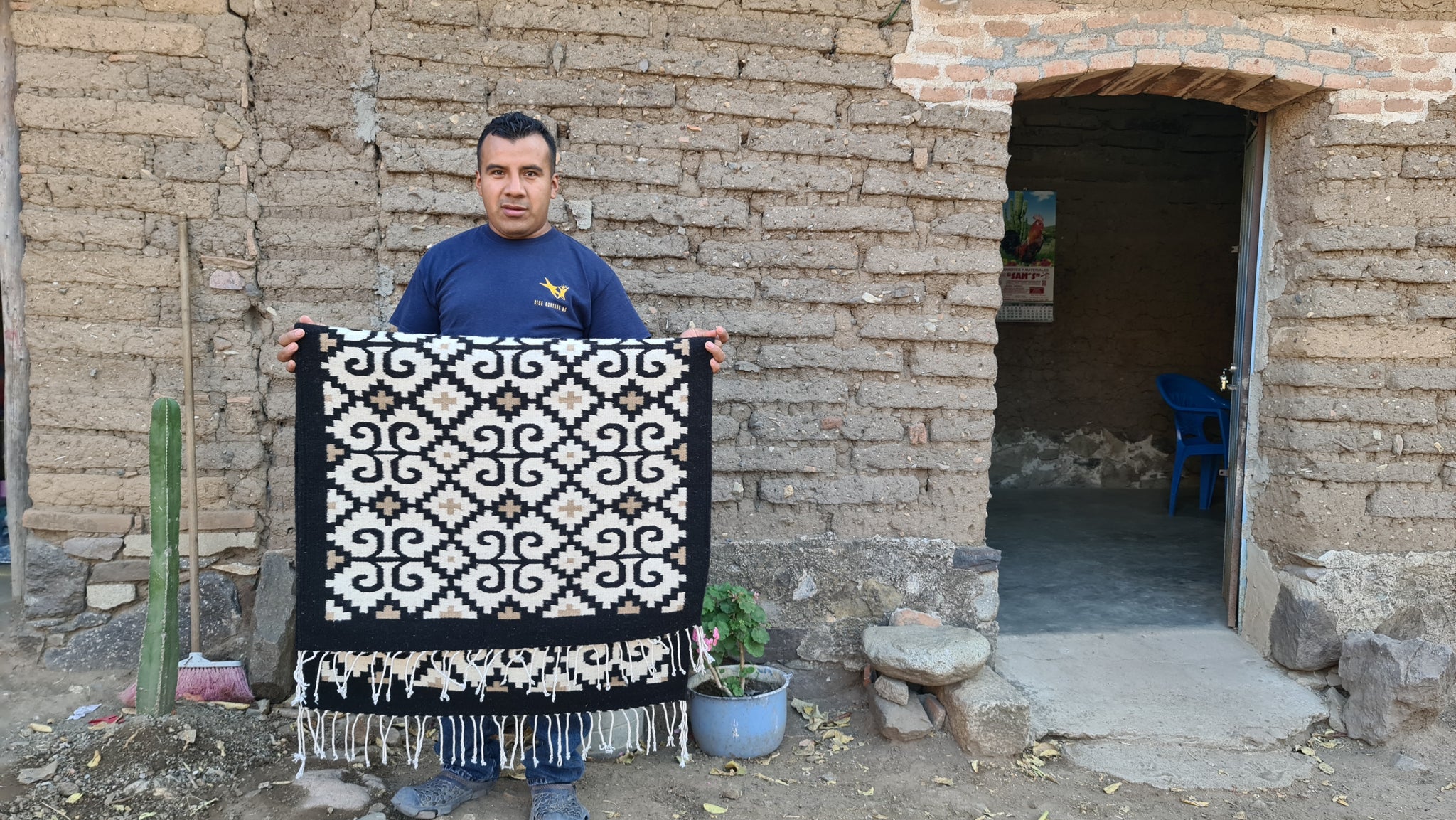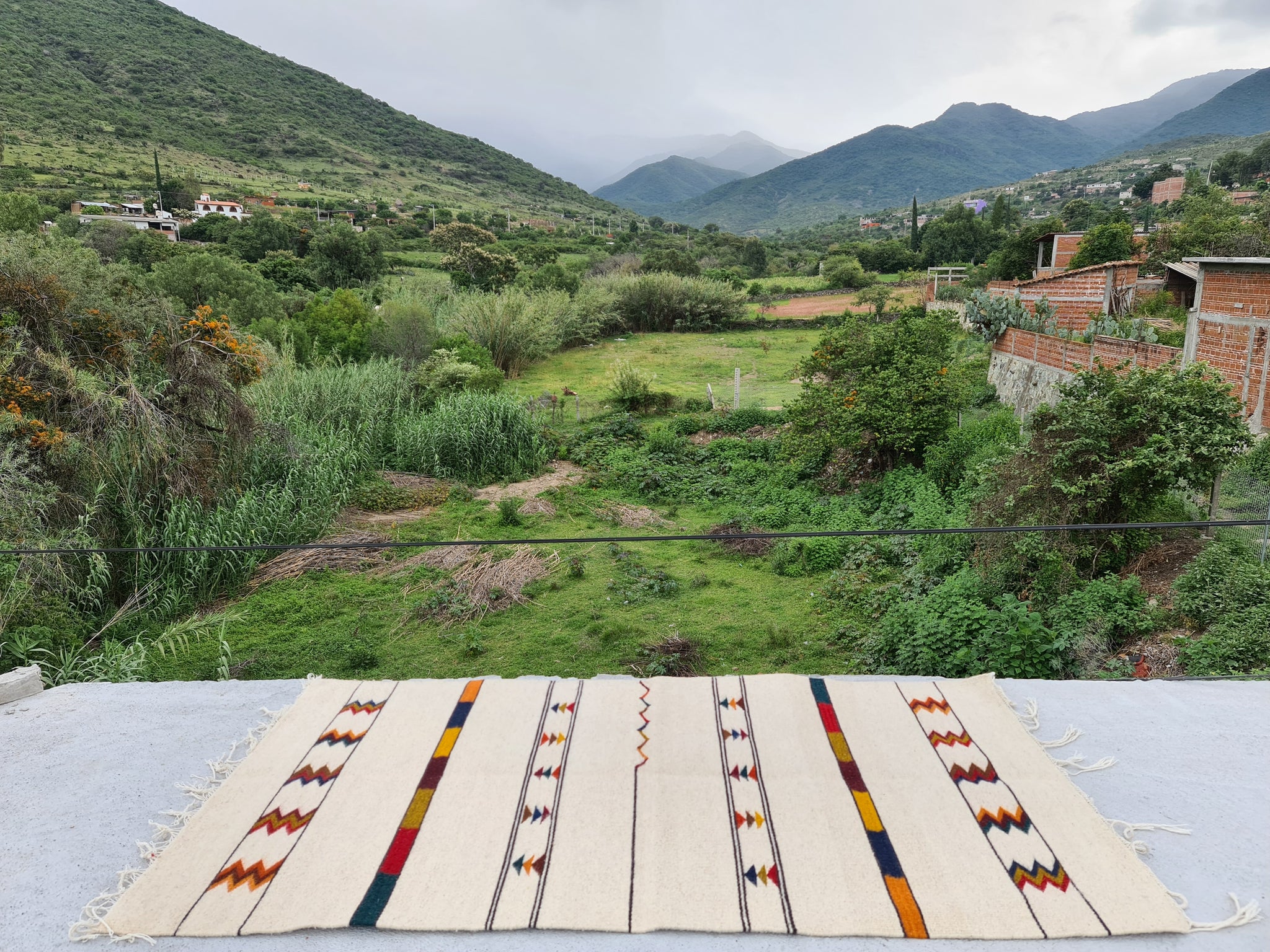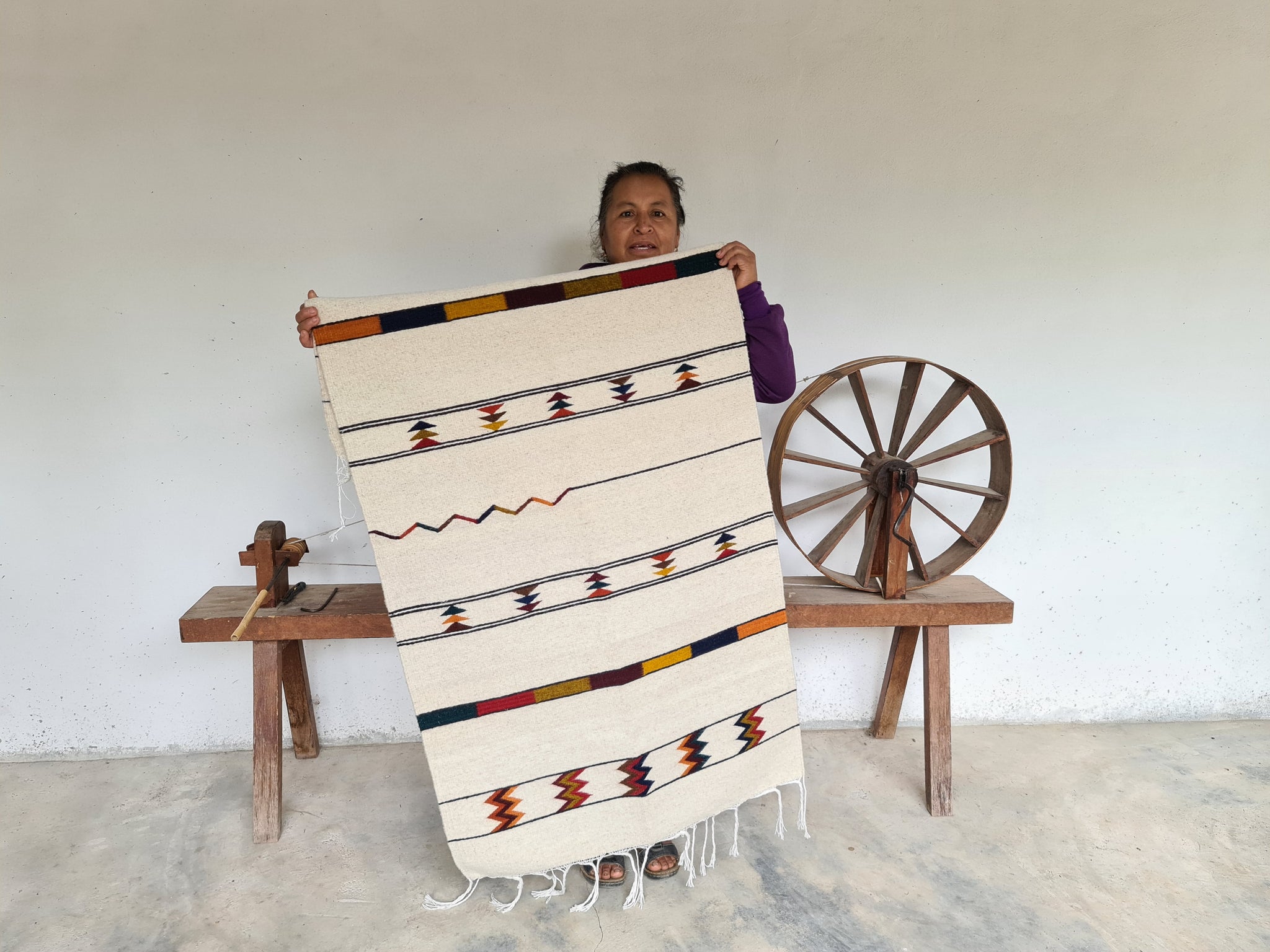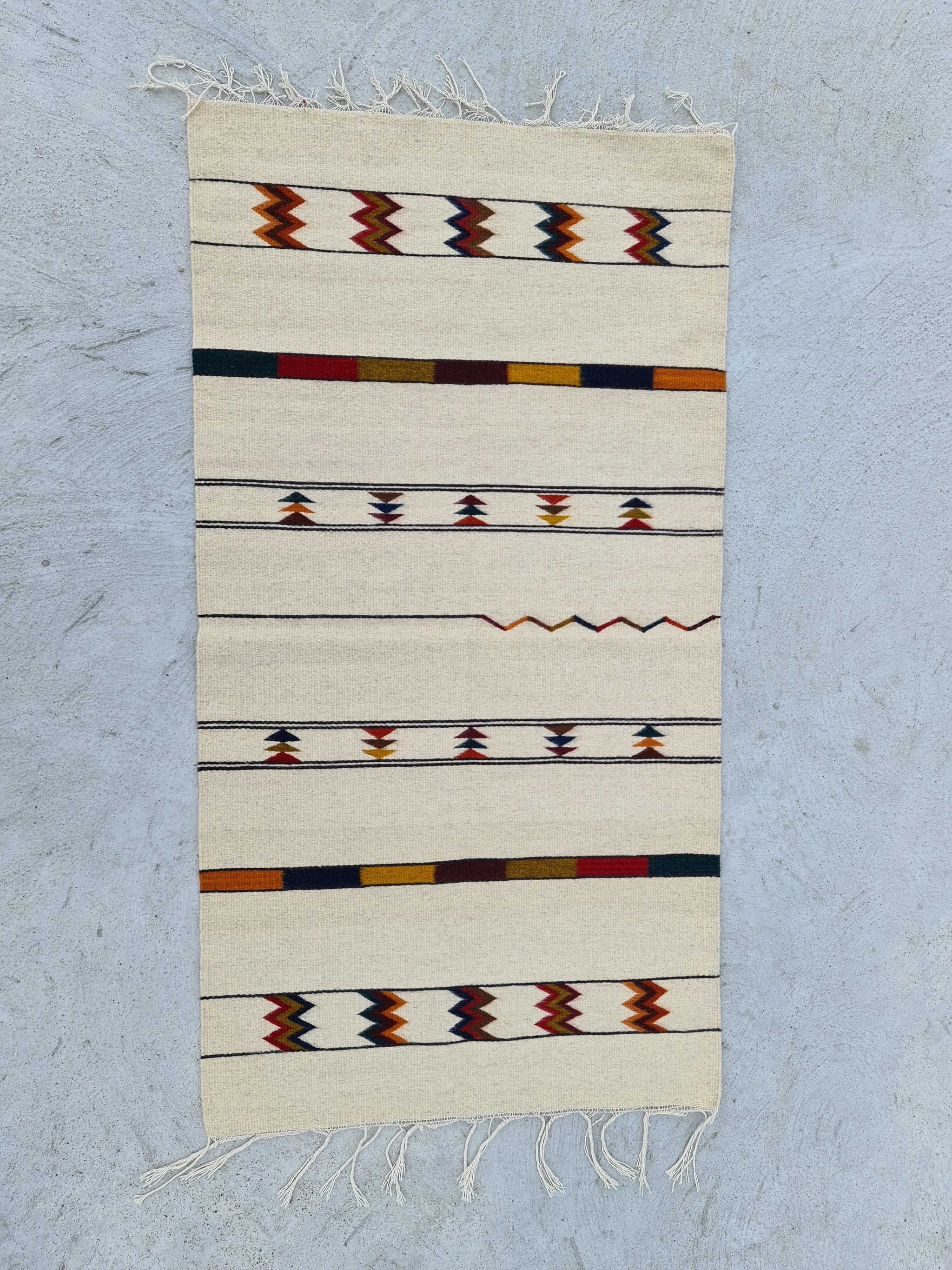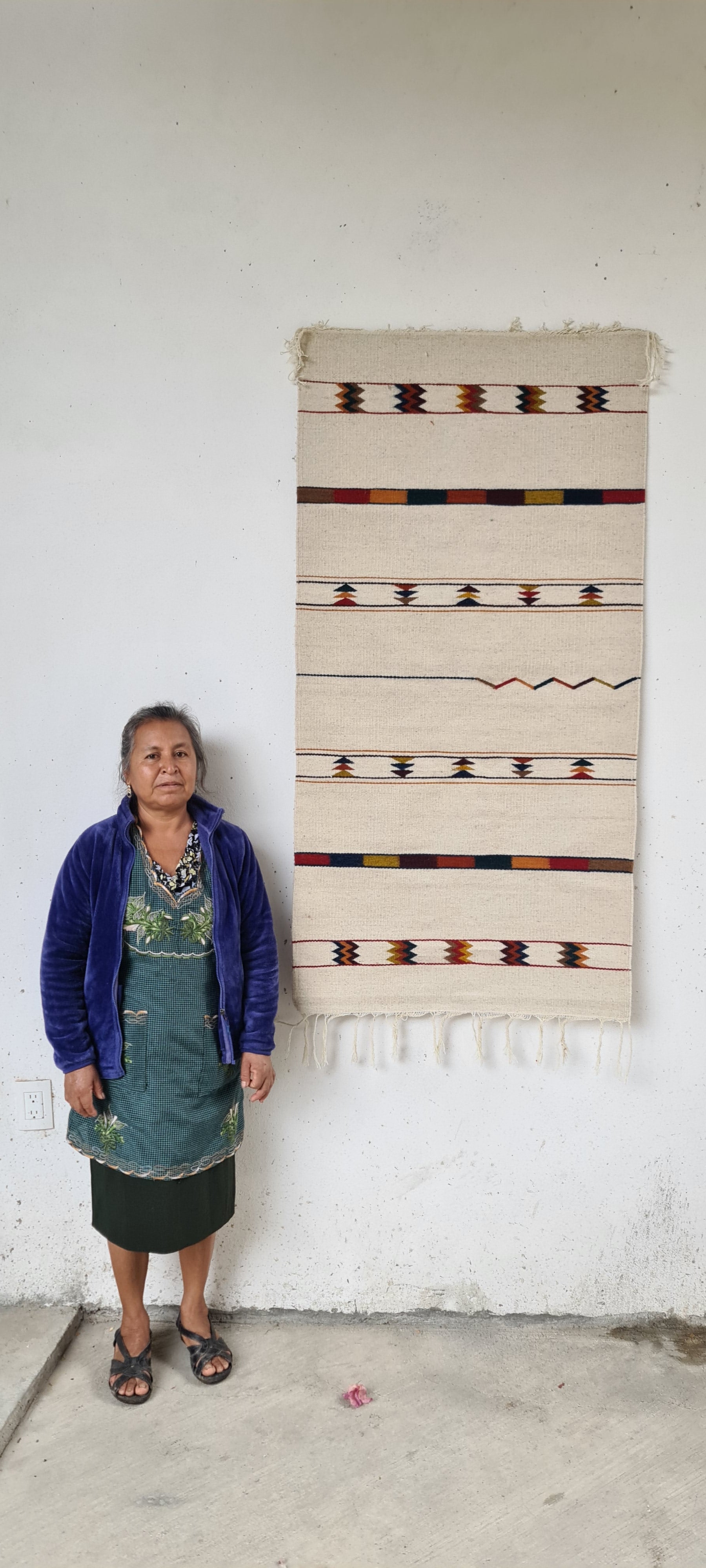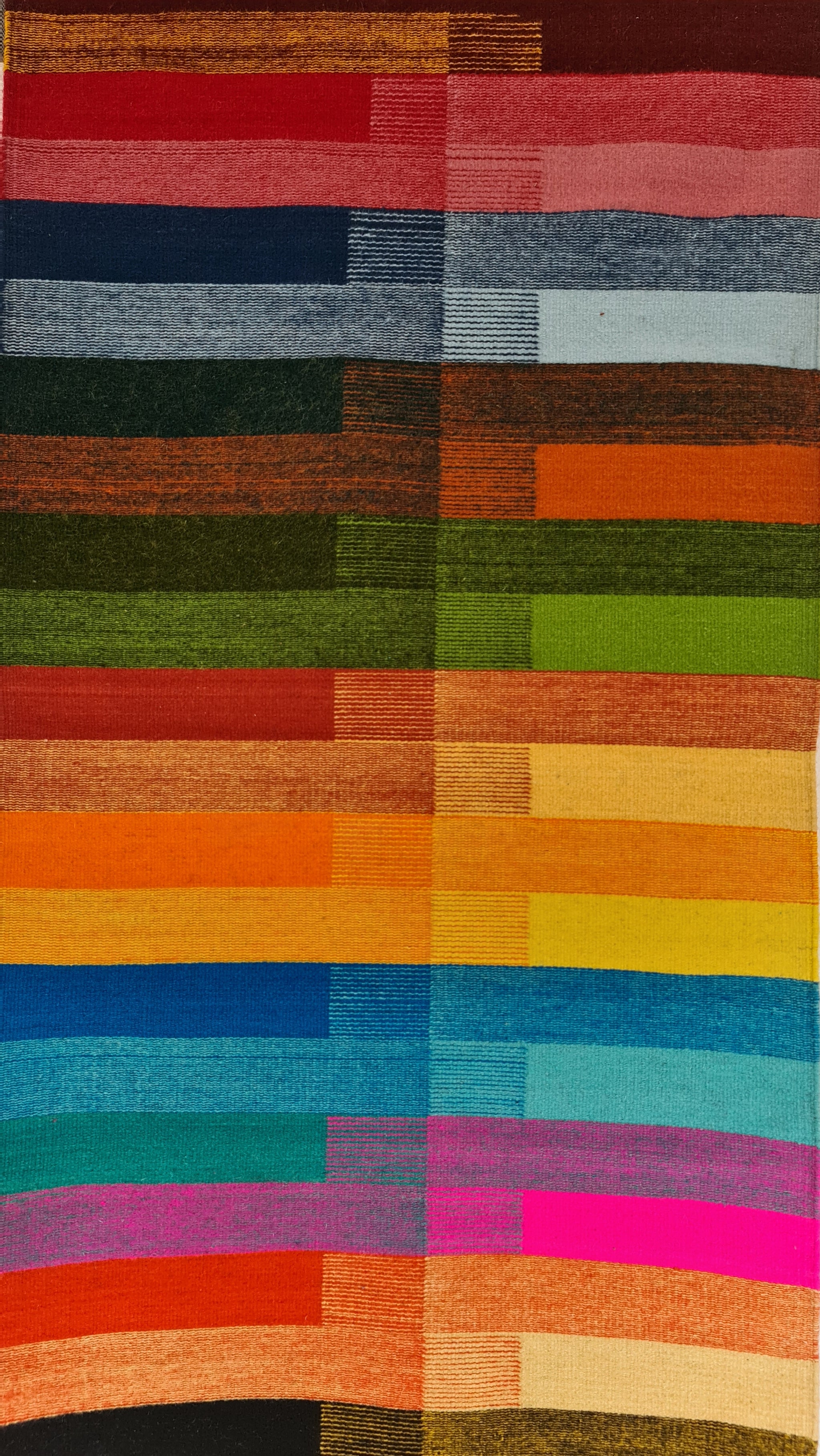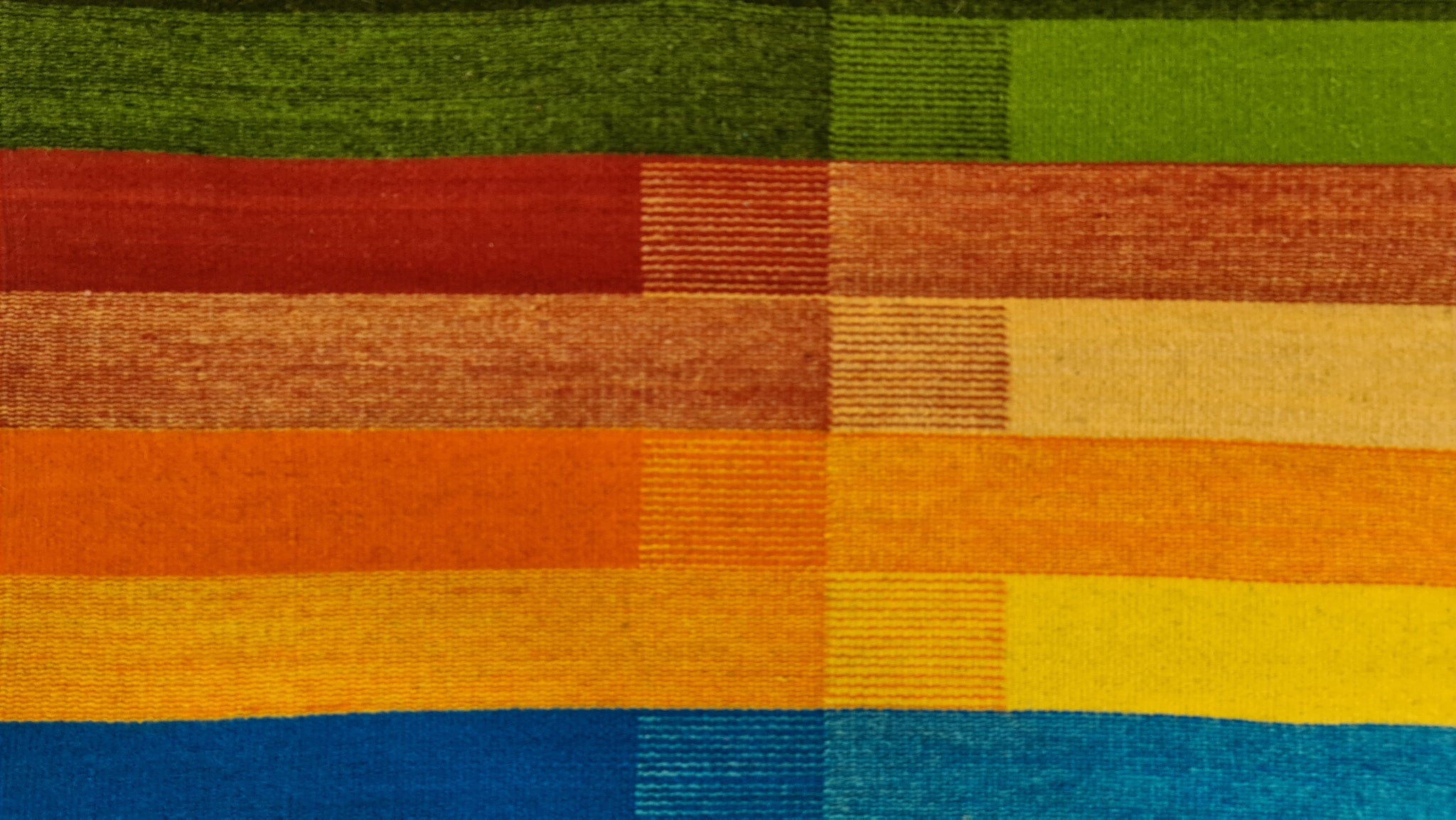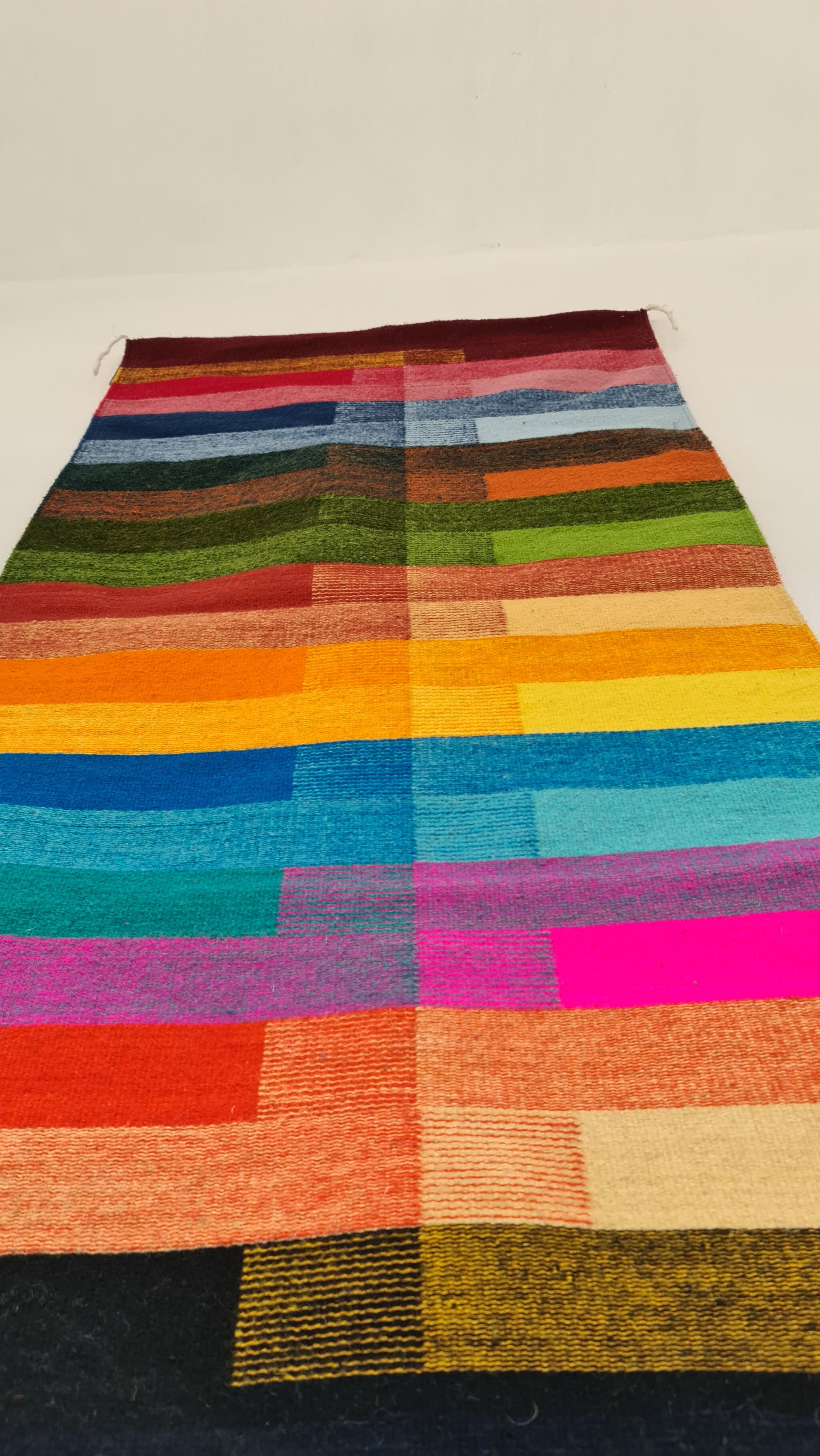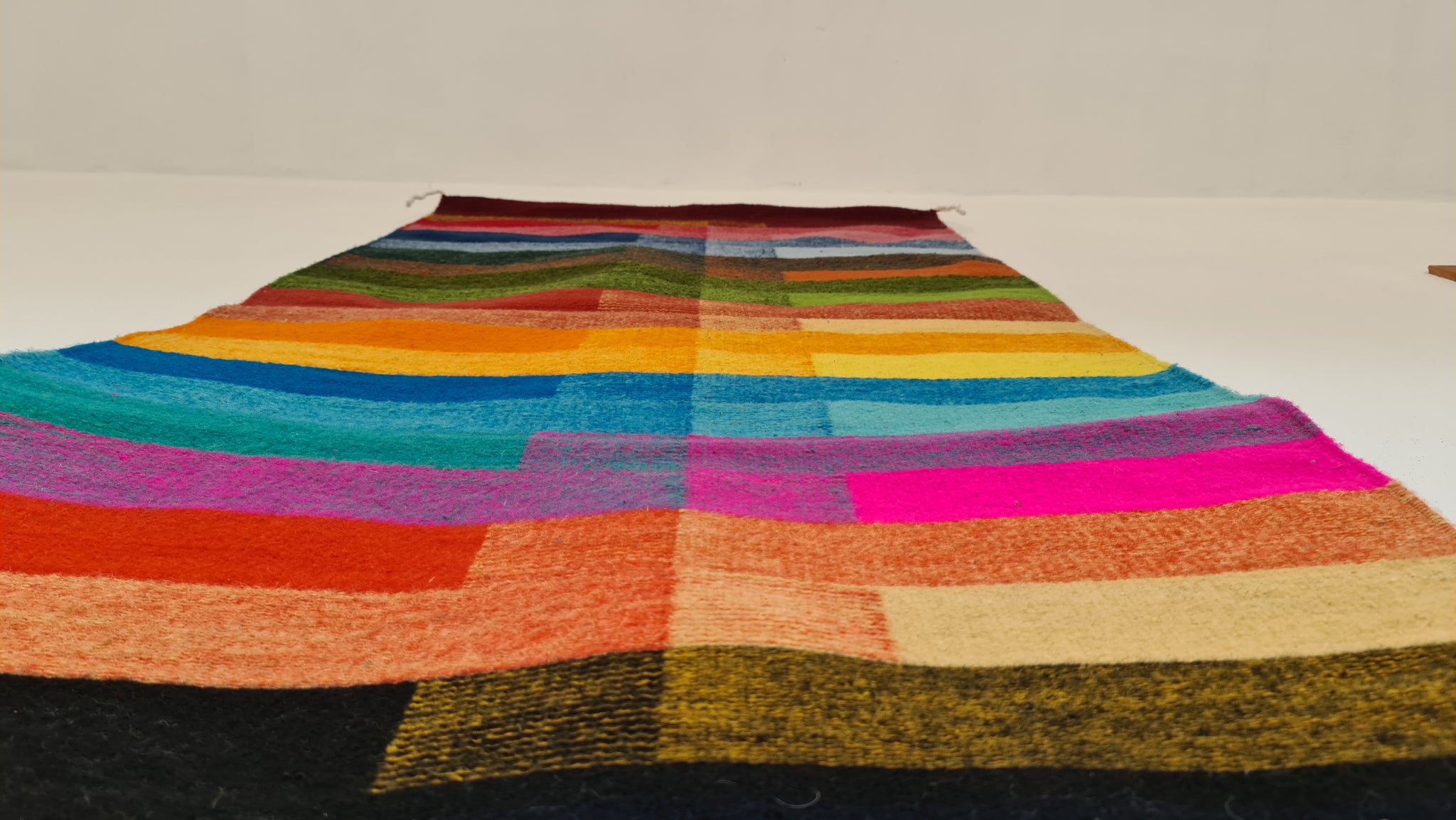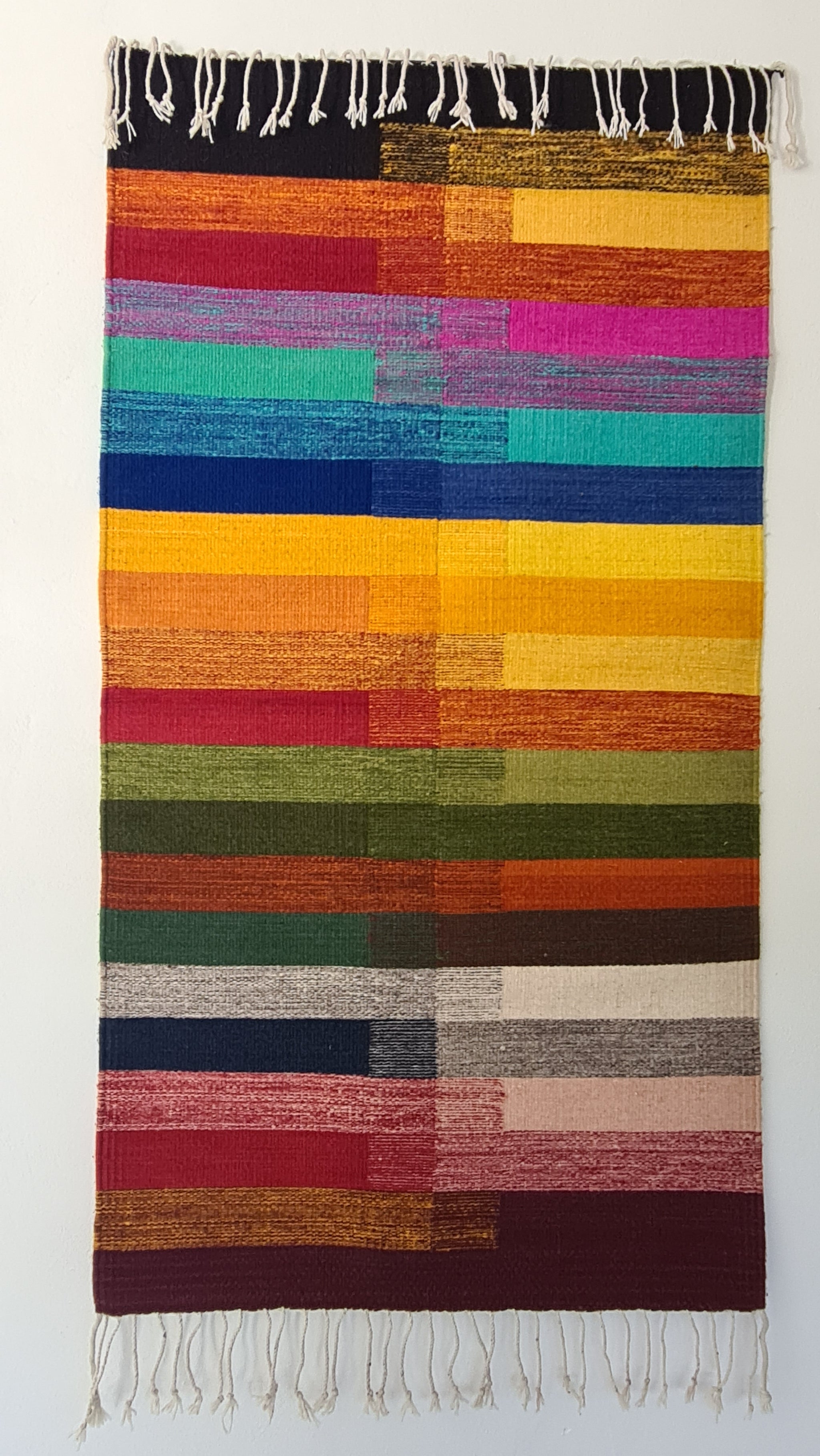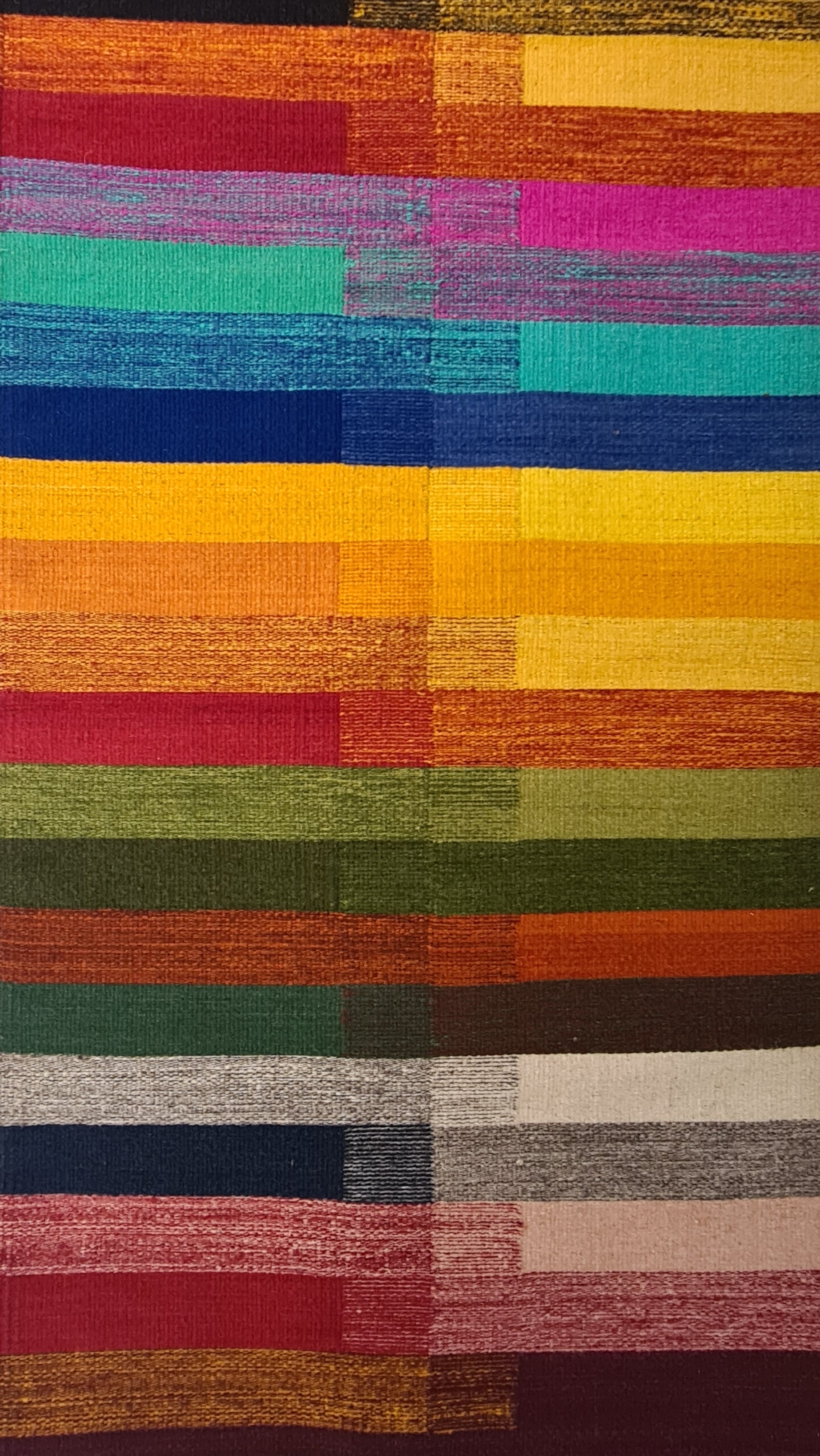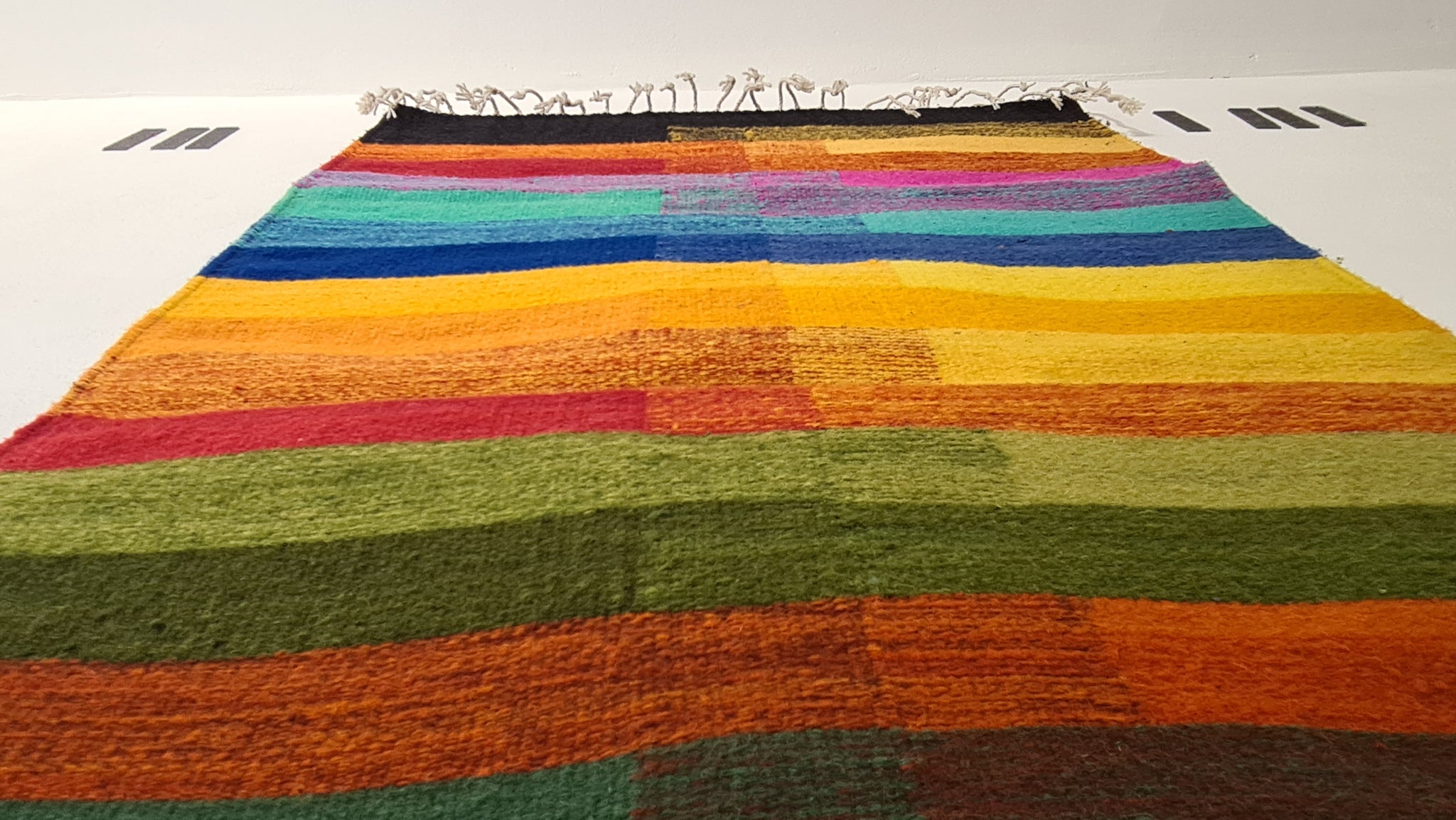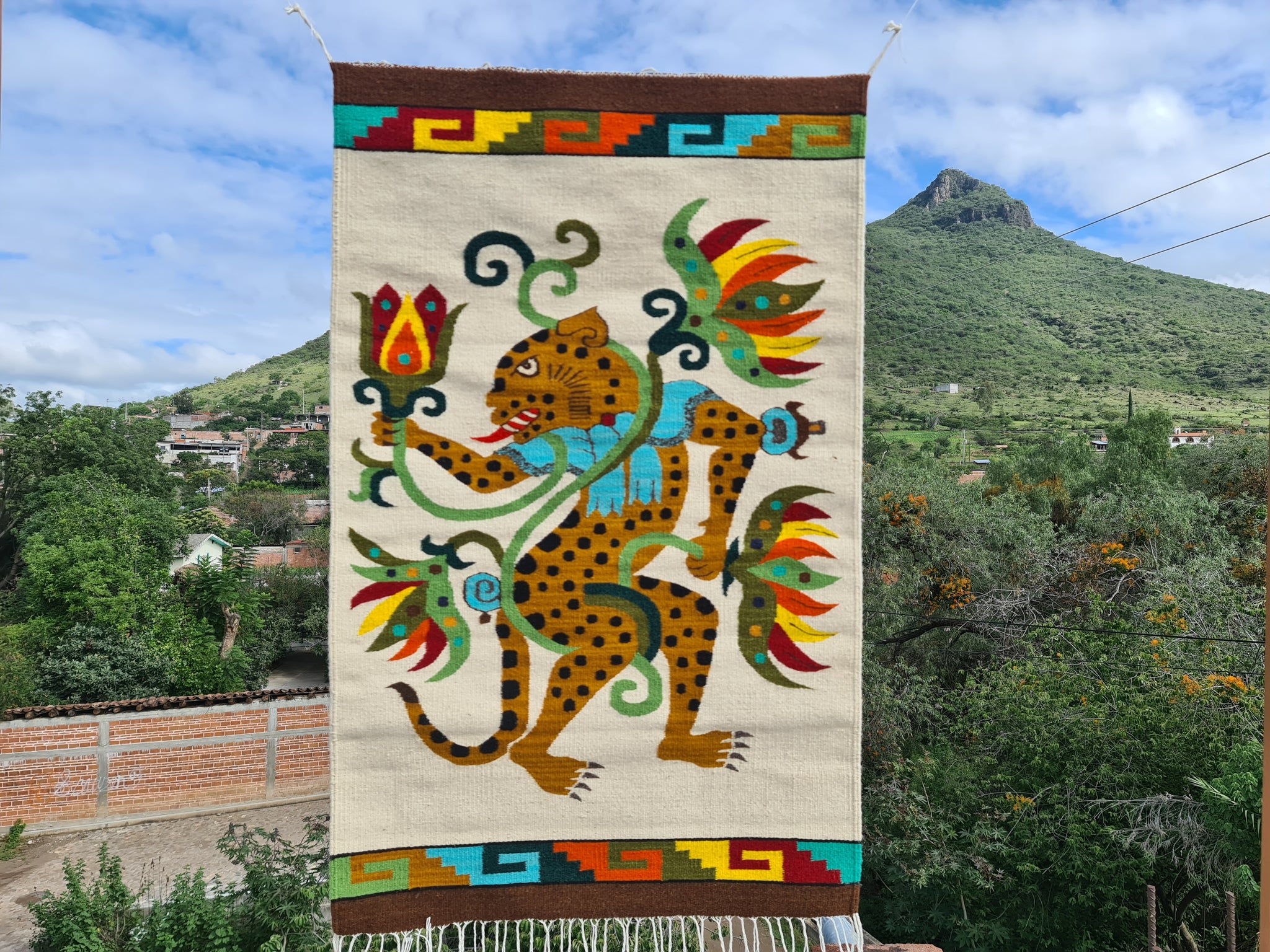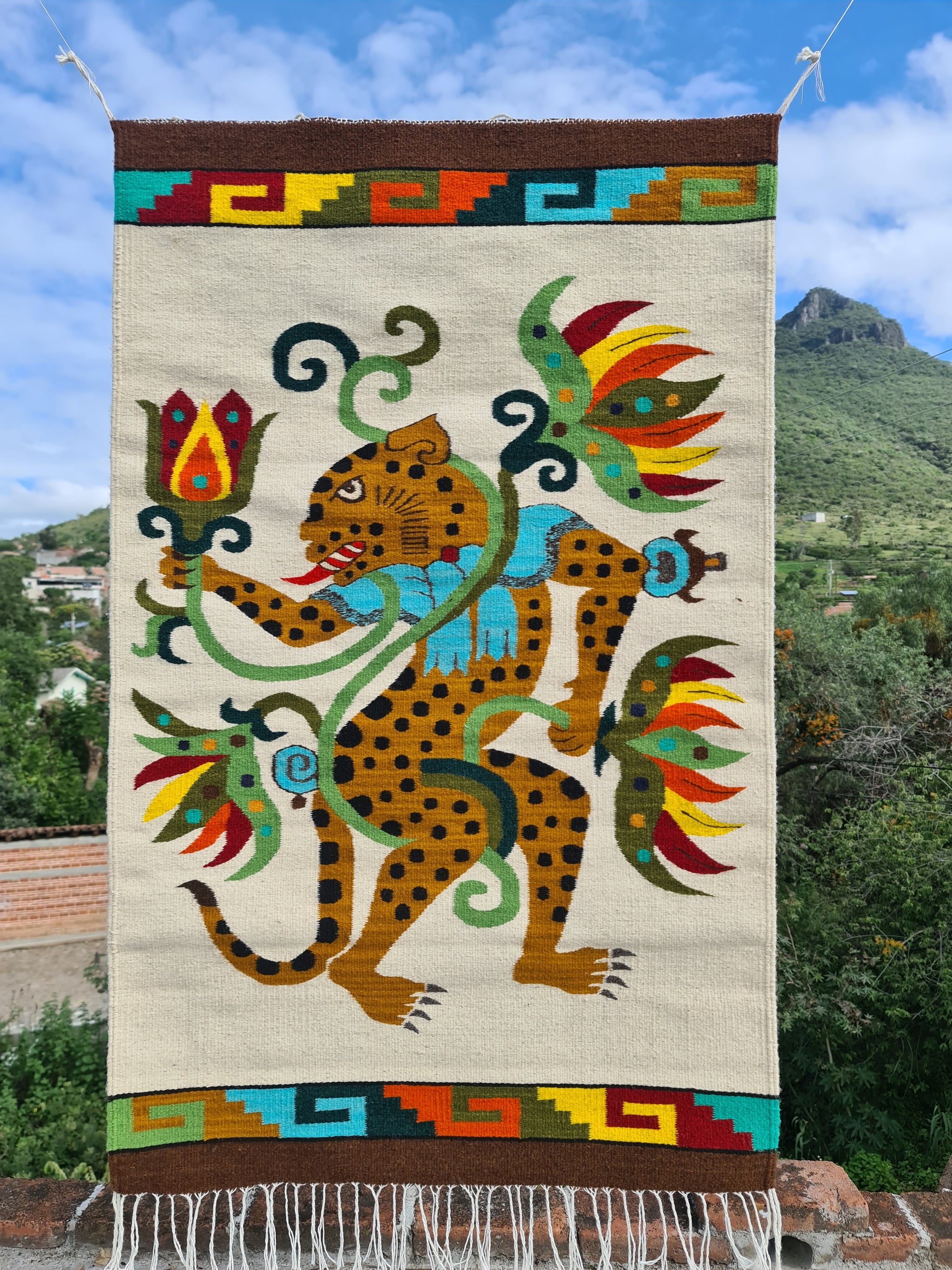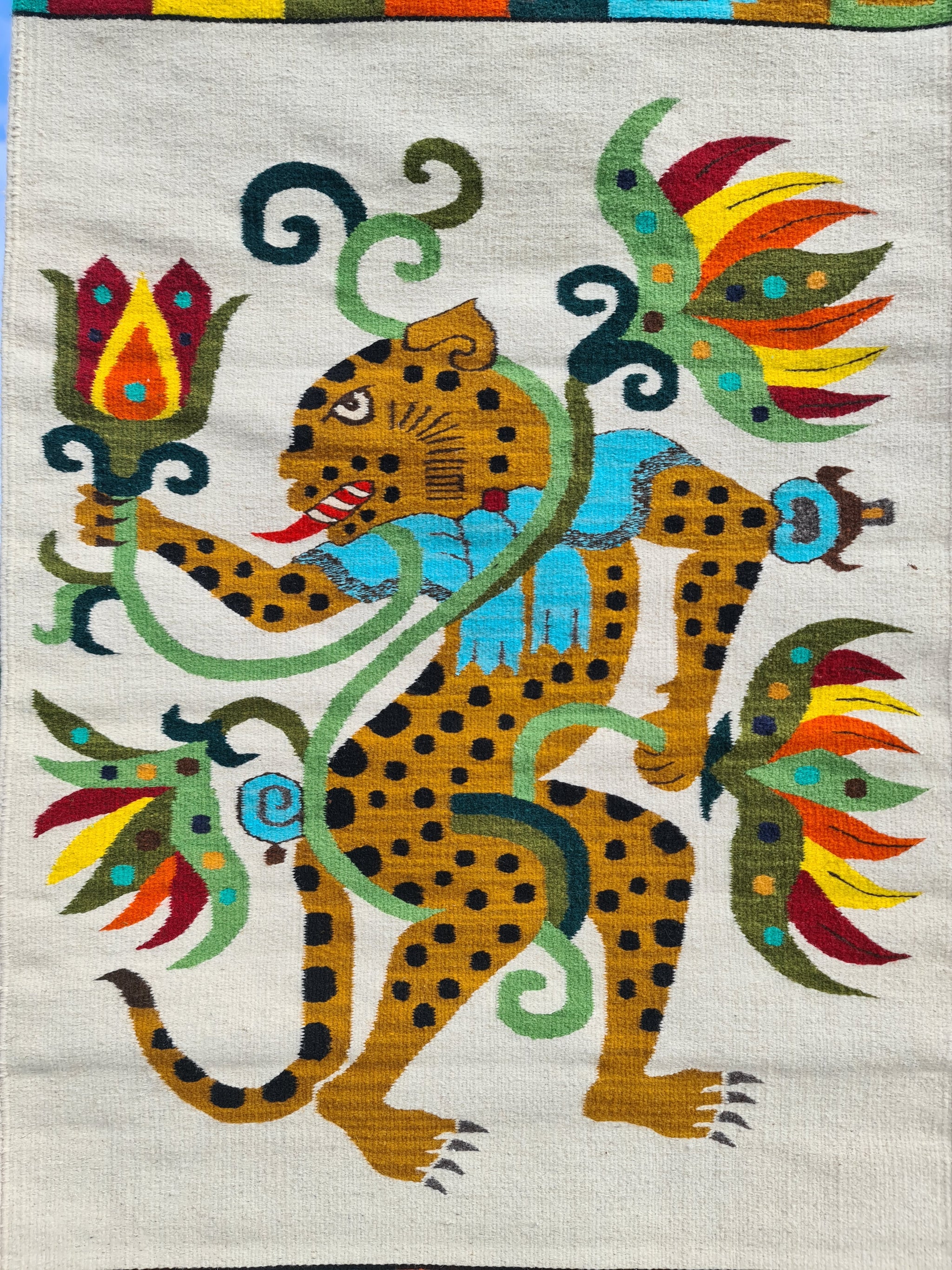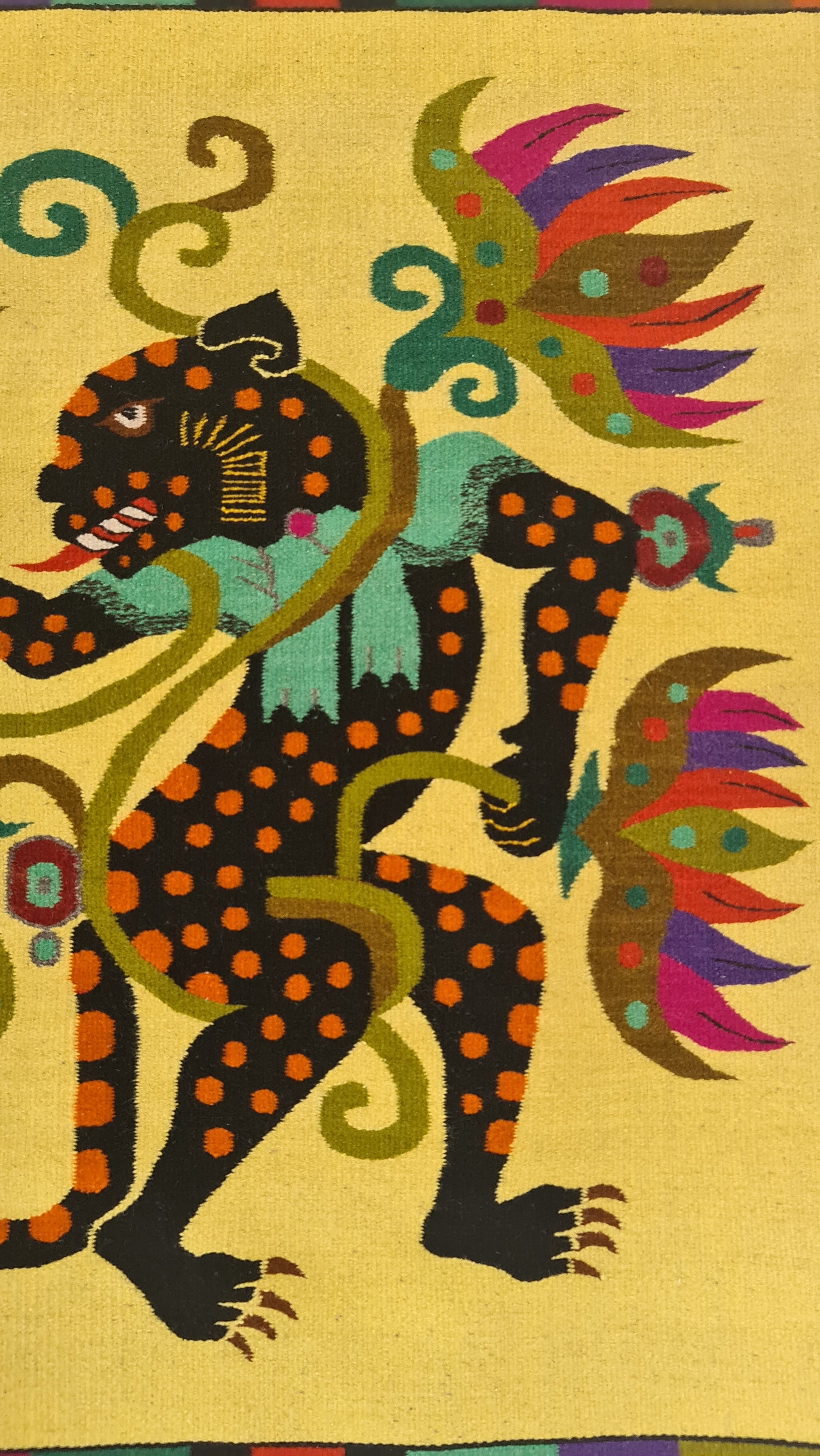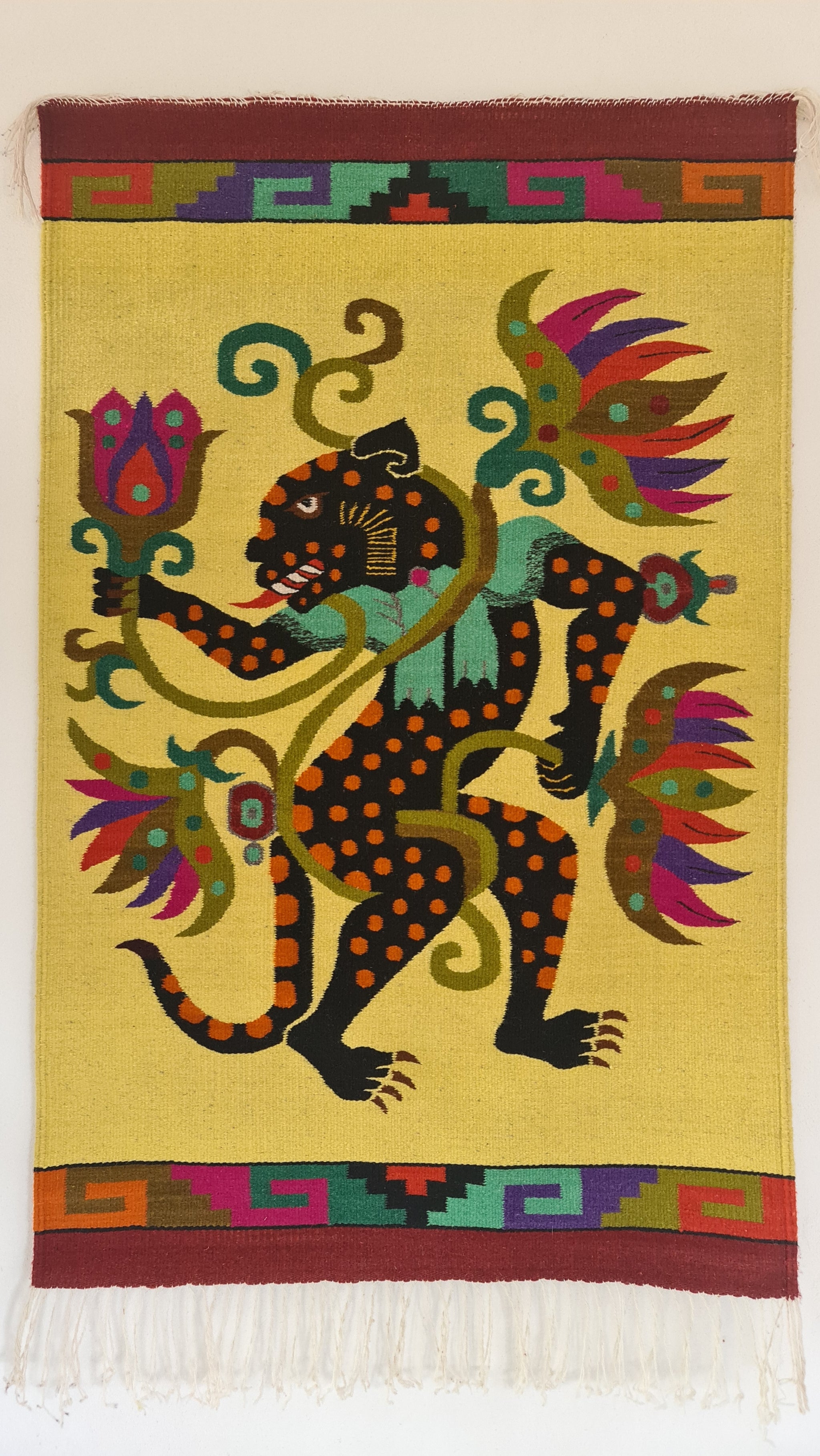Beni guieæ; beniduush. Nahual de día, Nahual de noche.
Sold Out $ 11,000.00
Size: 80x150cm, 2.6x5ft
Weaver: Hilario Bautista
Price:540USD.
Freee world wide shipping.
Materials and methods: criollo sheep wool hand dyed with colorfast aniline dyes using an exhaustive method. Handwoven on a Zapotec style loom of the 16th century adapted from European styles. Woven using a 7 threads per inch reed.
Design patterns and symbols.
This pattern is a #fractal symbol that teaches us about the perception state that nahuales (#shamans) achieve when they unite their nahual perception in the spirit world with the day to day perception in the tonal world of language, logic and mathematics. The nahual pattern is obtained by uniting the hands in a fist shape with the thumbs joined in the middle, just like a #mudra. Can you see it? This pattern also looks like the spiral of the Fibonacci series, the golden ratio that is found everywhere in nature, from our fists to the growth of plants and the formation of clouds and galaxies. This inner spiral represents the inner journey of self discovery that we have to embark to find our true face and true heart. We call this symbol in our language "Gareak Guiea", literally the flowered greek key symbol. Archeologist named this patterns Grecas in Spanish language because they noted the similarity with greek patterns and symbols. This naming of the pattern denotes the Eurocentric approach to the understanding of our native ancient cultures.
When I talk about the Nahual pattern I like to illustrate the pattern with the life path of Maria Sabina, a world renowned healer from Huatla de Jimenez that used the sacred mushroom to heal people in her village. It took her a life time to reach the status of a healer; when she was a young child her parents died so because she was very poor she and her sister would forage edible wild plants in the forest to feed themselves. Her life pattern lead her to walk the path of the warrior to bring the best of her spirit and flower in the world. When she was an accomplished healer she could transition easily from the Nahual perception (spirit world) to the day to day world; in the spirit world she would communicate with her patients to find out the source of their illness and then come back to the tonal world (day to day language world) to administer the healing with the precise amounts of plants and rituals needed for healing. Most ancient governors in our culture were Nahuales, healers, seers and great man and woman full if knowledge. It was during the colonial times that the word nahual got transgressed into a negative connotations describing evil people that cause damage and illness by transforming into scary animals.
Because the Nahuales use the totality of consiouness and understand life and death as one, they are often seen fighting for a bigger cause or defying the status quo even if it costs them their life; such was the case of Emiliano Zapata and María Sabina.
Share:
Related Items
Reepi shchaá: the flow of the spirit
$ 6,500.00
Size: 80x150cm; 2.6x5ft Weaver: Herlinda Ruiz Bazan Materials ans methods: criollo sheep wool hand dyed with colorfast aniline dyes using an exhaustive method. Handwoven on a Zapotec style loom of the...
Yeéti: rainbow
$ 7,150.00
Size: 80x150cm Weavers: Francisca Hipólito Variant 1 Belen Bautista, Variant 2 Price: $350USD Materials and methods: criollo sheep wool hand dyed with colorfast aniline dyes using an exhaustive method. Handwoven...
Beaz guie'a: water lily Jaguar
$ 14,000.00
Size: 81x121cm; 32x47.6in Materials and methods: criollo sheep wool hand dyed with colorfast aniline dyes in exhaustive dye vat. This tapestry work was handwoven on a Zapotec walking loom of...

